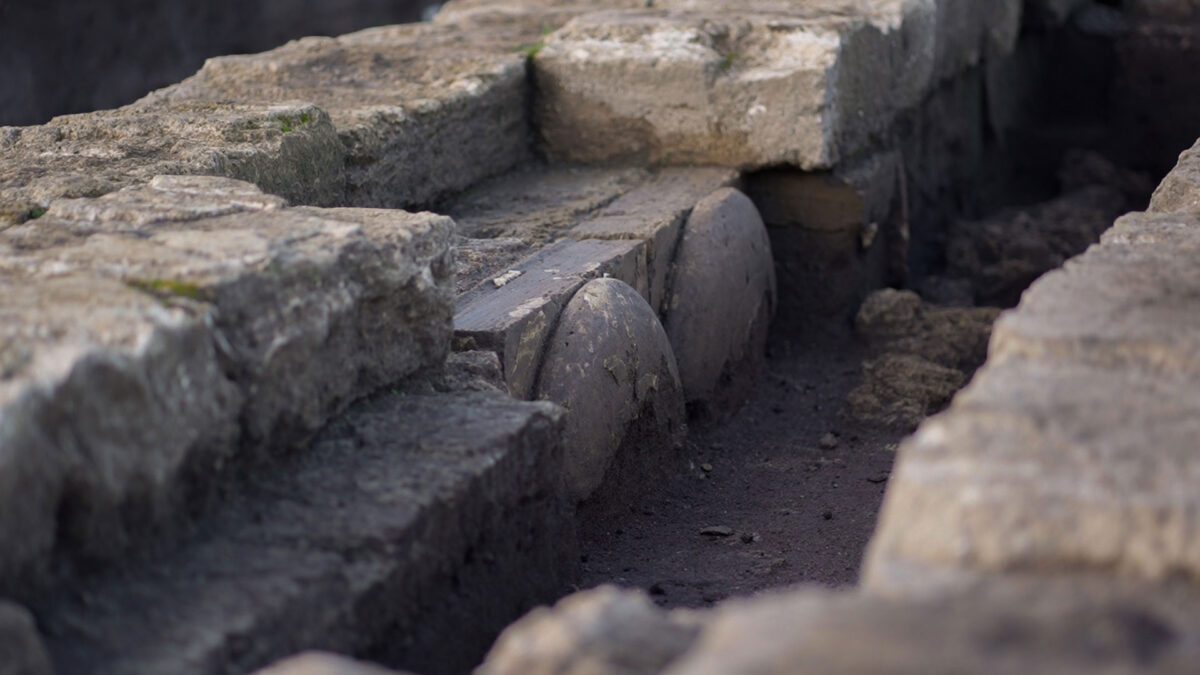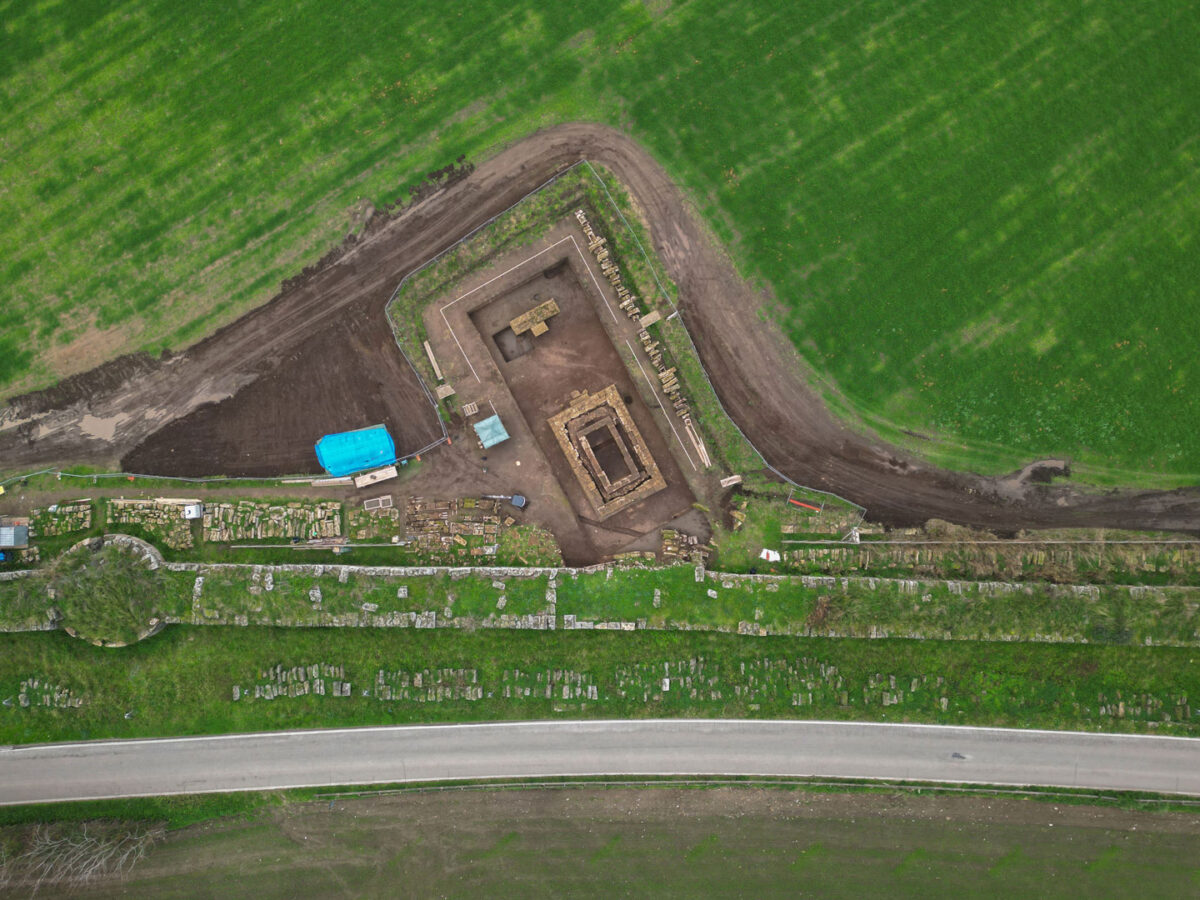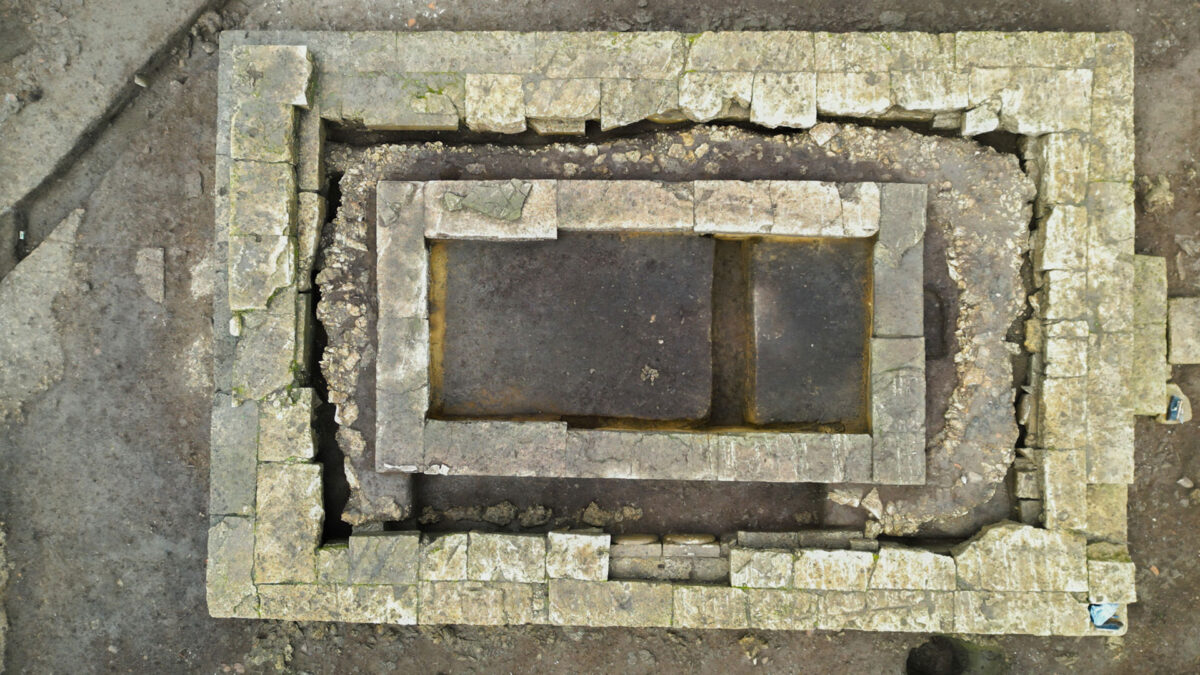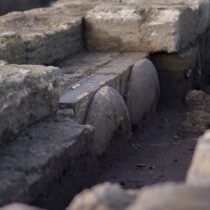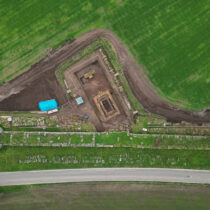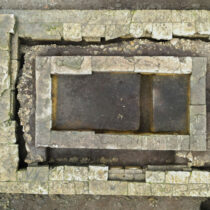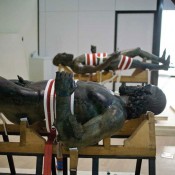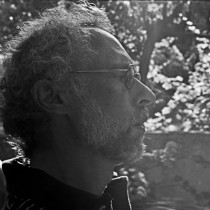In the western area of the ancient city of Poseidonia-Paestum, close to the city walls and a few hundred meters from the sea, a stratigraphic excavation campaign is underway which has brought to light two Greek temples in Doric style. These sacred buildings shed new light on the origins and urban development of the Magna Graecia polis and provide important information for understanding the evolution of Doric architecture in Poseidonia and Magna Graecia.
The first temple dates back to the first decades of the 5th century BC. Due to its architectural features and its dimensions it is an absolute unicum of Doric order temple architecture. It retains part of the stylobate which measures 11.60×7.60 m in size, with a peristyle of 4×6 columns.
However, further investigations showed that the history of the sanctuary might be older. Beneath the cella, 14 fragmentary Doric capitals and other architectural members were reused, probably for ritual purposes. The capitals are of similar size to those of the small temple explored so far. The typology is, however, different and comparable with that of the capitals of the temple of Hera I, the so-called “Basilica”, the oldest of the three major temples of Paestum.
These latest discoveries demonstrate that there had been another temple, of modest dimensions but with architectural characteristics similar to those of the first large temples of Paestum and dating back to the 6th century BC. For reasons still unknown, perhaps a collapse, at the beginning of the following century this structure was replaced by a new temple.
The discovery also significantly expands our knowledge of the city’s urban layout.
In a period of growth and monumentalization of the polis, the colonists of Poseidonia built a sanctuary in a strategic spot, to protect the urban space which was visible from the sea. The importance of this sacred space is confirmed by its various building phases, the construction of two Doric temples, and its long and uninterrupted use, which marks a continuity of worship throughout the through the Greco-Lucanian and Roman eras.
“The recent discoveries confirm there is still a lot to do in Paestum in terms of excavations, research and also in terms of evaluation. After decades of inertia, the Ministry of Culture is giving impetus to notable initiatives. We have reopened the National Archaeological Museum after important and demanding reorganization works which allow us to for a significant exhibition itinerary”, the Minister of Culture, Gennaro Sangiuliano stated.
